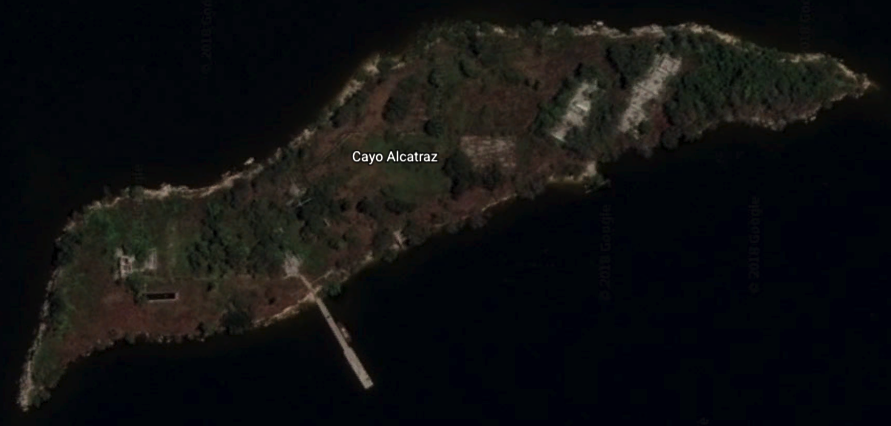#thinking
Peter Price and Valerie Value
21/04/19 - 14:46 Filed in: Procurement

Peter Price
If you listen to sales people, they will tell you about Peter Price. They meet Peter all the time. He might work in your organisation. Here's how you recognise Peter;
"Can you sharpen your pencil?"
"The spec is the spec. Let's talk about your price…"
"I understand that you believe your solution is special. Now about your price…"
"Have another look at your pricing"
"If you can't give me the pricing I need, I'll have to look elsewhere"
Main metrics are price savings
It's all very well us procurement practitioners talking about 'strategic procurement', but I cringe when i hear some of the stories about encounters with Peter. Now there are times when all of us have channelled our inner Peter, not because we wanted to, but because we had to. The budget wasn't there. We were under time pressure. I plead guilty, too.

Valerie Value
For us to have credibility as a profession, we have to be able to add value over and above navigating procurement governance or chiselling rates. Even Mr Magoo could see that artificial intelligence and machine learning will eliminate the role of Keeper of the Mysteries of Procurement Governance, and even existing technologies can create and harness competition quicker and more efficiently than Peter.
Valerie equates value to the benefits realised from a procurement project as a ratio of the cost of realising those benefits. Imagine we described the benefits realised from a procurement as being 'above the line' and the cost of realising those benefits as 'below the line'. Peter operates almost exclusively below the line. Valerie understands the business, and the business impact of the procurement.
This means that she can engage in discussion about whether a higher priced alternative is 'worth the extra', because she is aligned with stakeholders who can make a judgement as to whether the extra functionality is worth the extra money. By this stage, Peter has used up aphorisms about 'sharpening your pencil', and 'looking at your pricing' and has resorted to asking the other party to 'come to the party'. Some party. It makes us look like amateurs.
To be constructive, I have created a model to track whether we are more like Peter or like Valerie.
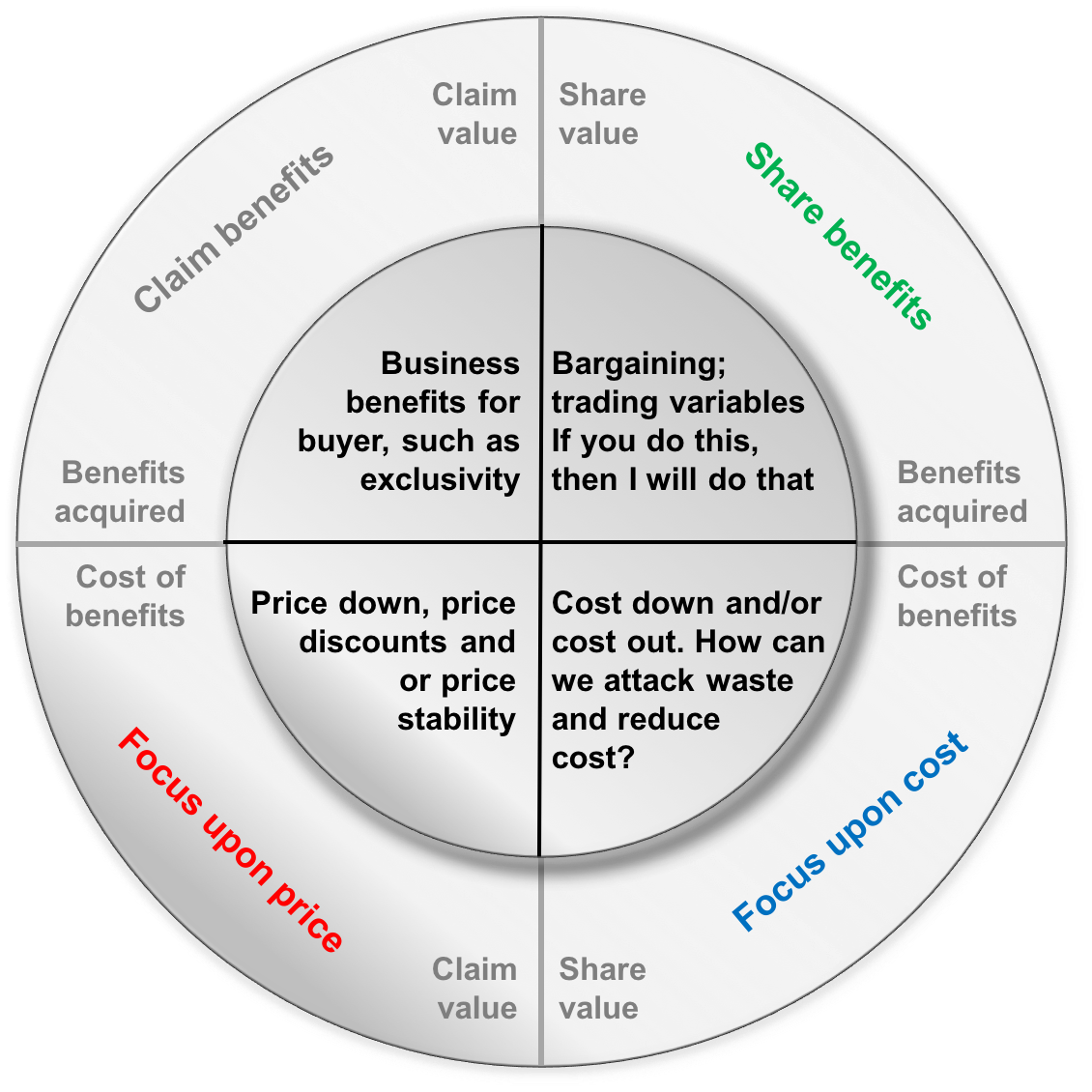
In the model, 'above the line' refers to business benefits and 'below the line' refers to the cost of acquiring the benefits. To the left of the central vertical line is 'claiming value'; the "I win / you lose" world of negotiating. Peter lives in the red zone, chiselling price. Valerie might be here too, but she is also likely to want to set negotiating objectives focused upon non-commercial matters. In the example above, Valerie has identified exclusivity as a business benefit. It may benefit the buyer, either disproportionately or completely.
Valerie and Peter may talk about reducing total cost, and in the example six sigma, lean or other cost down/ cost out initiatives are represented as sharing value, as neither party has to give up something, and both parties may benefit. And in the green zone, Valerie is all by herself, trading concessions in order to get a win/win outcome.
So there you have it, Valerie and Peter used as the personification of old school tactical purchasing and value-based procurement. I have created a blank template for you to use in your next negotiation. Simply print out the template, and put a dot in the relevant section of the graphic each time you make a statement. If you have dots all over the place by the end of the negotiation, well done! And if you have dots mostly in the red zone?
Can we have a word?
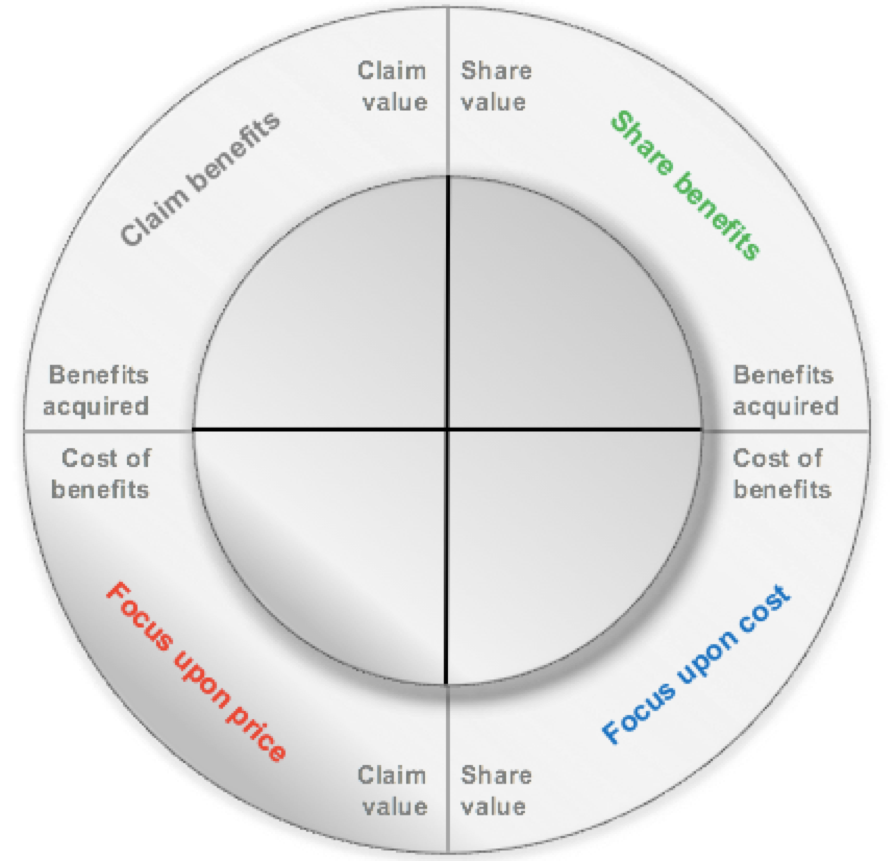
The case of the missing diamond
21/04/19 - 14:37 Filed in: Thinking
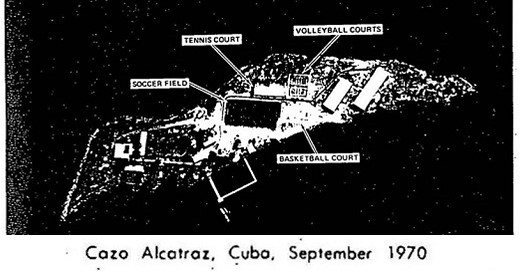
Can you see it? The missing diamond? If you look really hard I think you will be able to spot it! The clue is in the text at the bottom of the photograph. If you can't work it out, I will drop some clues in my post and give you the answer at the end of the article.
Visualisation tools
I have written previously about the belief that capability with one particular tool leads to better performance. The pitch for visualisation tools like PowerBi and Tableau is that seeing the data graphically will reveal patterns and trends that we simply cannot detect when looking at numbers. And through a process known as voodoo we will therefore make better decisions. Actually, that is unfair. Predictive analytics is based upon identifying relationships between two sets of variables:
- explanatory variables
- predicted variables
Analysis of the explanatory variables is used to predict outcomes in the predicted variables. I tried to explore how that works in practice in this post. Clearly the accuracy of the prediction will be driven in part by the quality of data and in part by the assumptions about what really "explains" variation in the data set. My contention is that we need to acknowledge the impact of external variables that we may not be able to measure easily.
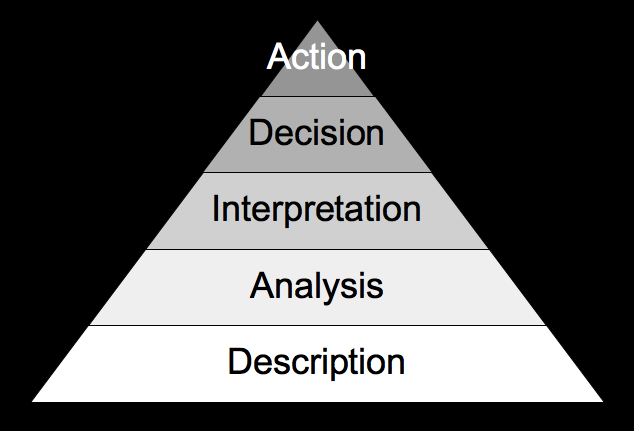
The point is that decision making is not a simple linear process like this; Facts + analysis = better choices. The next time you review a procurement strategy, consider what proportion of the strategy document is describing the situation, how much is analysis, and what is the interpretation of the output of the analysis.
Dino Brugioni
For example, in early autumn 1970 a CIA analyst named Dino Brugioni looked at the photograph above (taken by a US U2 spy plane) of construction activity on an island called Cayo Alcatraz near the port of Cienfuegos in Cuba. Description would be that it is a photograph of an island. Analysis revealed the presence of multiple sports facilities on a relatively small island.
Interpretation is where things get interesting. For there to be so many sports facilities, there must have been lots of construction workers. To play soccer you need at least 22 players, so it was reasonable to assume at least 20 - 30 (relatively young) men were stationed on the island. What were they building? Was it connected to the jetty on the south side of the island? After all, Cienfuegos is a port. It was Brugioni's prediction that the photograph revealed something important, and within days the photograph was on National Security Advisor Henry Kissinger's desk, and a few days after that Kissinger persuaded President Nixon to make the decision to take action. Triggered by this photograph!
The point is that when we analyse spend data, or supply markets, we may well describe the data, and even use tools of analysis. But we also leverage judgement and experience to reach a decision. Tableau or PowerBI do not transform decision making by themselves. Interpretation requires knowledge, experience and wisdom. And there is no point looking backwards in time unless we use that knowledge to make better decisions about what to do in the future.
The explanation
In the case of the photograph, Brugioni's analysis was that there were lots of sports facilities present on a small island, apart from a facility for the most popular sport in Cuba, beisbol. Why would there be a soccer pitch, but no baseball diamond? Why would the construction workers build permanent sports facilities? Because the base was being built by Russians. Cubans play baseball, Russians play soccer. Brugioni predicted that the facility would become a permanent Russian naval base, and escalated the advice immediately. Nixon's intervention stopped the construction of the Russian naval base, and it was never finished. The case of the missing diamond!
So what?
Cool story, bro, but so what? The 'so what' is:
When you analyse situations, there may not be a missing diamond, but there will be some facts staring you in the face and some facts missing.
Analysis is better than simple description, but analysis needs interpretation to make decisions
When analysing a situation, it is important to try to be objective about what is happening, and what is not happening
Interpretation involves synthesising multiple information sources to understand the 'what' and the 'why'
In this case, inductive reasoning is needed to 'join the dots' using information not present in the photograph
In many cases we will not have all the data we would like to have to make a decision
Experience, insight, hunches and 'wisdom' are part of the voodoo involved in making decisions in uncertain situations
Whether a spend analysis or a market review, we only look backwards in time to better inform our future choices
Our decisions are future-focused, and whether developing a category strategy or limiting the threat of nuclear war, if there is no action, there is no point
Visualisation tools are like the U2 spy photograph. They give us a new way at looking at a situation. But no tool can reveal what isn't there, and we all need to be as insightful as Dino.
Here is the island today, courtesy of Google Earth. Nature has reclaimed the island!
